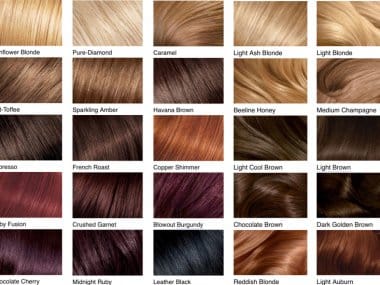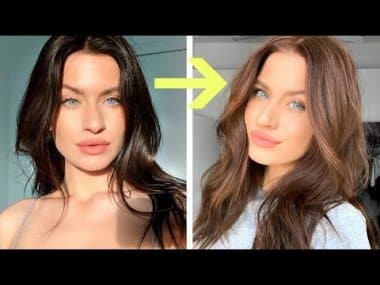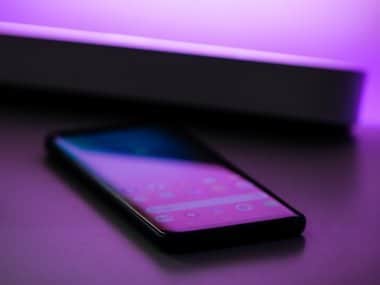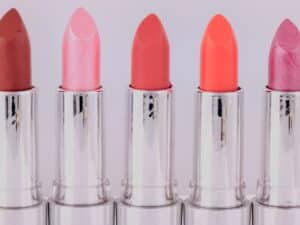Purple shampoo is every blonde’s best friend, but sometimes it can also be your enemy.
When your hair gets stained from purple shampoo, there are a few ways to remove it from your hair.
Contents
How does purple shampoo work?
In the world of hair care, there’s a unique and intriguing product that has gained immense popularity in recent years – purple shampoo. With its vibrant hue and promising claims, purple shampoo has become a staple in individuals with blonde, silver, or lightened hair routines. But what’s the science behind this seemingly magical elixir? How does it work wonders on brassy tones, leaving hair refreshed and revitalized? Let’s dive into the world of purple shampoo and unravel the mystery behind its effectiveness.
Before delving into the specifics of purple shampoo, it’s essential to grasp the basics of color theory. Colors are positioned on a color wheel, with complementary colors located opposite each other. Complementary colors cancel out each other’s tones, creating a neutral or balanced result. Purple is the complementary color of yellow, and this principle forms the foundation of how purple shampoo works.
Blonde, silver, and lightened hair can often fall victim to a common concern known as brassiness. Brassiness occurs when the hair develops unwanted warm or yellow tones over time due to factors such as exposure to sunlight, minerals in water, and the natural oxidation process. These warm tones can dull the vibrancy of your hair color, making it appear less fresh and vibrant.
Purple shampoo is a specially formulated hair care product designed to combat brassiness. The secret lies in the use of purple pigments within the shampoo. Purple is the opposite of yellow on the color wheel, effectively neutralizing yellow and orange tones.
When you apply purple shampoo to your hair, the purple pigments in the formula work to cancel out the warm tones that have developed in your blonde or lightened hair. This process is similar to how color correctors work in makeup – by applying a complementary color, and you counteract the unwanted tones. As the purple shampoo lathers and is rinsed out, it takes these unwanted tones along with it, leaving your hair looking cooler, brighter, and more vibrant.
Choosing the Right Purple Shampoo
Not all purple shampoos are created equal. Some may be more pigmented than others, affecting their effectiveness in combating brassiness. Choosing a purple shampoo with a balanced amount of purple pigments is crucial, as too much pigment could lead to your hair appearing slightly violet or lavender. Additionally, considering your hair’s texture and condition is vital, as purple shampoos may vary in terms of their conditioning properties.
While purple shampoo can work wonders, it’s essential not to overdo it. Using purple shampoo too frequently could lead to a bluish or purplish tint in your hair. A general rule of thumb is to use purple shampoo about once or twice a week or as needed. If your hair is severely brassy, you might initially use purple shampoo more often and then gradually reduce its use once you’ve achieved your desired tone.
Now that you understand how purple shampoo works, we can dive into getting it out when it stains your hair.
Rinse With Hot Water
Hot water can be a valuable ally in removing purple shampoo residues. Heat is known to open up the hair cuticles, which are the outer protective layers of each hair strand. When cuticles are open, releasing and washing away any product buildup, including pigments from purple shampoo, becomes easier. Here’s how rinsing with hot water can help:
The warmth of hot water helps to loosen and break down product residues, making it easier for water to carry away the pigments that may have clung to your hair strands.
Open cuticles allow water to penetrate the hair shaft more effectively, ensuring that any lingering purple shampoo residues are thoroughly diluted and rinsed out.
Rinsing with hot water can promote the removal of any trace pigments, helping your hair regain its natural, refreshed look without any unwanted undertones.
Use A Clarifying Shampoo
Enter clarifying shampoo – a potent tool that can rescue your hair from any lingering purple residues and restore it to its natural splendor.
Clarifying shampoo serves as a potent weapon in the battle against product buildup and unwanted color residues. Unlike regular shampoos, which focus on cleansing the hair’s surface, clarifying shampoos are formulated to deep-clean and remove stubborn residues from the hair and scalp. Here’s how a clarifying shampoo can help remove purple shampoo residues:
While clarifying shampoos are strong cleansers, they are designed to be used periodically, typically once a week or as needed. Their balanced formulation removes residues without excessively stripping the hair of its natural oils.
Best Practices for Using Clarifying Shampoo
To harness the benefits of clarifying shampoo and effectively remove purple shampoo residues, follow these guidelines:
1. Choose the Right Frequency: Clarifying shampoo is powerful, so use it judiciously. Incorporate it into your hair care routine once a week or whenever you notice excessive product buildup.
2. Follow Instructions: Read and follow the instructions on the clarifying shampoo bottle. Some clarifying shampoos may require you to leave the product on your hair for a few minutes to maximize its effectiveness.
3. Condition Afterwards: After using a clarifying shampoo, be sure to follow up with a conditioner to restore moisture and prevent over-drying.
4. Be Gentle: While clarifying shampoo is effective, it’s essential to be gentle when massaging it into your scalp and hair. Avoid vigorous scrubbing, which can potentially damage the hair and scalp.
5. Avoid Overuse: While clarifying shampoo is excellent for removing residues, using it too frequently can lead to excessive dryness. Strike a balance between clarifying and regular shampoos to maintain healthy hair.
Clarifying shampoo is a remarkable tool that comes to the rescue when purple shampoo leaves behind more pigment than desired. Its cleansing prowess and ability to remove product buildup, including stubborn purple pigments, make it an essential addition to your hair care arsenal. By understanding its benefits and incorporating it wisely into your routine, you can ensure that your hair is always shining with its natural brilliance, free from any unintended color shifts.
| IMAGE | PRODUCT | DETAILS | |
|---|---|---|---|
 |
Paul Mitchell Shampoo Two |
|
|
Overnight Shipping  |
OUAI Detox Shampoo |
|
|
Cosmetologist Favored Brand  |
Kenra Clarifying Shampoo |
|
|
 |
Moroccanoil Clarifying Shampoo |
|
Use Dish Soap
Using dish soap to remove purple shampoo residues from your hair can be effective, but it should be cautiously approached. Dish soap is designed to cut through grease and remove tough residues, which includes hair products like purple shampoo. However, dish soap can also be harsh and dry your hair and scalp. If you decide to use dish soap, here’s a step-by-step guide:
I recommend using dawn dish soap.
Step 1: Choose a Mild Dish Soap Opt for a mild and gentle dish soap. Look for one that doesn’t contain harsh chemicals, fragrances, or excessive detergents. Dish soaps designed for sensitive skin or those labeled as “gentle” might be more suitable.
Step 2: Prepare a Mixture Mix a small amount of the mild dish soap with water in a container. You’ll want to dilute the dish soap to avoid using it at full strength, which could be too harsh on your hair.
Step 3: Wet Your Hair Thoroughly wet your hair with lukewarm water. This will help prepare your hair for the dish soap mixture.
Step 4: Apply the Mixture Gently apply the diluted dish soap mixture to your hair. Focus on massaging it into your scalp and working it through your hair to ensure even coverage.
Step 5: Massage and Rinse Using your fingertips, massage your scalp and work the mixture through your hair. Be gentle to avoid tangling or damaging your hair. After massaging, rinse your hair thoroughly with lukewarm water.
Step 6: Condition After rinsing out the dish soap, apply a good-quality conditioner to your hair. The dish soap may strip your hair of natural oils, so conditioning will help restore moisture and softness.
Step 7: Rinse with Cool Water Finish by rinsing your hair with cool water. Cool water helps to close the hair cuticles and seal in moisture.
Step 8: Dry Gently Gently pat your hair dry with a soft towel. Avoid rubbing your hair vigorously, as it can lead to frizz and damage.
Additional Tips:
- Use Sparingly: Dish soap is potent, so only use a small amount and make sure to dilute it with water before applying to your hair.
- Follow with Conditioner: Conditioning your hair after using dish soap is essential to restore moisture and minimize potential dryness and damage.
- Seek Professional Advice: If your hair becomes excessively dry or damaged after using dish soap, consider seeking advice from a professional hairstylist.
- Avoid Frequent Use: Using dish soap on your hair should be rare. Regular shampoos and conditioners formulated for hair are designed to maintain the health and balance of your hair more effectively.
While dish soap can help remove stubborn residues, it’s important to remember that it’s not meant for regular hair care. If you struggle with removing purple shampoo, a clarifying shampoo formulated for hair might be a gentler and more appropriate option.
Seek Professional Help
While purple shampoo is generally designed to neutralize brassy tones in blonde, silver, or lightened hair, sometimes it can lead to unintended color shifts or residue buildup. If you’re facing issues related to purple shampoo, there are some specialized treatments that professional hairstylists might recommend to help address these concerns.
Professional treatments will be stronger yet chemically made to not destroy your hair. They will have the proper products and knowledge to help remove he purple tint while painting your hair integrity.
Color Correction Treatment
If your hair has developed an unwanted purple or violet tint due to purple shampoo, a color correction treatment can help balance and correct the color. Hairstylists can use color-correcting techniques to neutralize unwanted tones and restore a more natural shade. This might involve applying specific color formulations or using color-depositing products in complementary shades.
They might have to go the route of reapplying a toner or direct hair dye.
Clarifying Treatment Professional Strength
A clarifying treatment involves using specialized clarifying shampoos or products designed to deep-clean and remove product buildup, including any excess purple shampoo residue. These treatments can help strip away any stubborn pigments and restore your hair to its original color.
These professional clarifying treatments work twice as fast with less damaging chemicals in over-the-counter hair products.
Deep Conditioning and Moisture Restoration
If the use of purple shampoo has caused your hair to become dry or brittle, a deep conditioning and moisture restoration treatment can help. Professional-grade deep conditioning treatments can nourish your hair, repair damage, and restore its natural moisture balance.
These are usually not too expensive and don’t take much time. While you can get deep conditioning treatments online, they will be diluted and won’t work as well as professional ones.
Glossing or Glazing Treatment
A glossing or glazing treatment involves applying a clear or slightly tinted conditioning treatment to your hair. This can help enhance shine, even out color, and create a more polished appearance. It’s especially beneficial if your hair has developed uneven color due to the use of purple shampoo.
Color-Depositing Products
In some cases, hairstylists might suggest using temporary color-depositing products in complementary shades to counteract unwanted tones. These products can be used in between salon visits to maintain your desired color.










